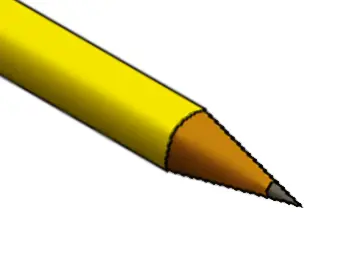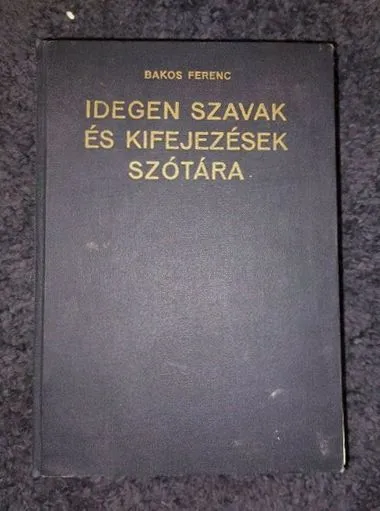I studied engineering in college (in the US) and on exams they’d throw a mix of imperial and metric problems at us.
Any time it was imperial, a lot of us would convert everything to metric, solve the problem, then convert the answer back to imperial
When I was a child in the 70s, metric was hyped everywhere from my science classroom to PBS. Then Reagan let an advisor talk him into torpedoing the official change. Can’t say when, but over time I woke to the fact the change would never happen.
I hate measuring stuff in fractions. Trying to replace a part, reading my calipers, “Is that… uh, 7’16”? Fuck it. It’s 11mm, I’ll convert it."
I do like F for temperature as it applies to human comfort. No it’s not logical, but 0F is cold as hell, 100F is hot as hell. Plus, there’s more “resolution”. Go up 1C and that’s roughly 2F. I often change the thermostat up and down by 1F. 1C would sometimes be too big a change. C for all science use cases, of course.
You’re not wrong. From a US citizen who is tired of the old ways that don’t work anymore
You use US customary, though, not Imperial.
I was in Canada and ordered a 20oz beer. The waitress said “ok the pint” and I said “uhh…the 20 oz one” and she said “yeah…ok.”
Didn’t realize that we had smaller pints (16 oz) than they do everywhere else.
The issue with the imperial unities is that every single place has their own derivation of them. You are lucky if they are consistent within an entire city.
The US had a lot of trouble getting them consistent through the entire country. Most of the world stopped using them instead.
The funny part is that US customary units are defined from SI units.
So does trying to convince the U.S. to switch.
Moreover, 1m³=1000 litres, 1litre=1kg (of water)
Kg
k is kilo, K is Kelvin.
While that’s true, it’s an inconsistency. All other prefixes for factors greater than 1 are capitalized, while lowercase prefixes are for factors less than 1.
No, hecto and deca are also not capitalized. The rule should be, uppercase if more than 10^3. Or simply the change between upper and lowercase is between 10^3 and 10^6, not at 1.
It grinds my gears much more, that all the letters are latin, except μ.
Yeah, Latin prefixes should have Greek letters, and Greek prefixes should have Latin letters.
Or, maybe we change µ.
Personally, both are fine to me. But the first one would also solve the similarity between m and M, and also y and Y.
Now hear me out: Kelvingrams. If you can have an absolute coldest, maybe an absolute heaviest!
I don’t think this is how physics works but it sounded fun…
You wanna know what is ridiculous, calling european paper sizes “metric”.
I’m not sure if I ever heard that one, but that’s indeed nonsensical. ISO 216 is a very nice system, though, and used in most of the world, not just Europe.
I am not arguing it isn’t nice, just that labeling it metric is a misnomer. The 1:√2 ratio doesn’t have any inherent connection to the metric system.
There’s a connection, but after that it’s base 1/2 instead of base 10 (or 1/10). So A4 is ~1/16 m^2
If you’re doing science, go metric. For EVERYTHING else, Imperial is sooo much better. Imperial measurements are easier to relate. You’re 1.68m tall? Means nothing. You’re 5’ 6", you go short king. Temp is 40C? Hieroglyphics. It’s 105F out, too hot, I’m staying inside.
Do you think that maybe people find the measurements they’re more used to easier to picture, rather than it being an intrinsic feature of the system?
Looks like 96% of earth seems to manage
Imperialism does waste a ton of time!
Knowing the empire, its probably designed to be confusing so that you dont learn things
It was designed to be aesthetic and practical and also to be able to easily do in your head, something metric lacks in large part. Science hasn’t advanced enough to create a consistent system by the time most imperial units were standardized. Metric has its own problem. People were way more autistic by the time metric was invented so it’s kind of goofy and combersome. The Babylonians had a base 60 system to make geometry very intuitive and easy to do in your head. This is why we have 60 seconds In a minute and 60 minutes in an hour, and 24 hours in a day. These are nice ratios that are very human friendly when calculating without computers and stuff. They break down easily into integers so no need for pesky decimals.
If I ever become a great physicist in going to do all my physics in imperial just to troll people. Not really, I rely on chatGPT far too much for math these days.
Yeah, i believe you rely on chatgpt
Sensitive much?
Metric would be better if the units weren’t so goofy. A meter is so freaking big. I’d hate to have to build houses in meters. Lots of decimals. Also the base 12 system is superior in many ways. Doing math in your head for example. It’s easier to break 12s up into ratios and get whole integer units. It’s a more geometric system. As an American I learned both. I use them for different things. Metric for scientific stuff and physics, imperial for basically everything else. Whenever I’m trying to determine how much power you need to do something, or how much energy you need to do something, metric is the way to go, when I’m building something, imperial is definitely better. You can do all your math in the same system and then just convert the final answer if you need to. I often convert kw/hrs into horsepower because that is more intuitive to me when imagining things. If I’m designing something in my head I still think in feet, inches, yards, and miles. It’s just easier to imagine those things for me personally.











